
 |
 |
||||||||
|
|
Lessons Menu - Lesson 9 - Lesson 10 - Lesson 11 - Lesson 12 - Lesson 13 - Lesson 14 - Lesson 15 - Lesson 16 |
| Lesson Plan 12 - Agriculture CALIFORNIA CROPS |
download
lesson12.pdf |
|
| OVERVIEW STUDENT OBJECTIVES CALIFORNIA HISTORY STANDARDS BACKGROUND
ARTICLE 12 STUDENT
ACTIVITY SHEET 12 AND KEY |
ADDITIONAL ITEMS AVAILABLE IN THIS LESSON PLAN: |
|
DOCUMENTS TO DISCUSS
(view online or print screen) |
||||
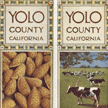 download PDF file |
1. Yolo County pamphlet [ca. 1913] This pamphlet describes crops grown in Yolo county and includes many photos. |
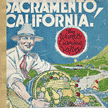 download PDF file |
2. Sacramento County
pamphlet [ca. 1926] This brochure provides similar information about Sacramento County. |
|
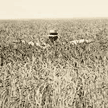 view large image |
3. A wheat field [ca. 1924] Man demonstrates how tall wheat has grown on Natomas Lands wheat farm. |
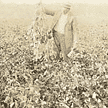 view large image |
4. Field of beans [1925] Man displays bean vine, approximately three weeks after planting. |
|
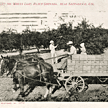 view large image |
5. Peach harvest [unknown] Wagon with peaches. |
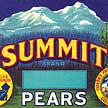 view large image |
6. Summit Pears crate
label [ca. 1900] This label features the California Fruit Exchange Blue Anchor brand logo. |
|
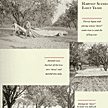 download PDF file |
7. Almond harvest
history [unknown] This brochure documents the harvesting and processing of almonds before mechanical equipment was used. |
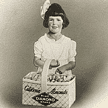 view large image |
8. Almond advertising [ca.1920] Drawing/painting of a young girl holding a basket of California almonds. It is a cut-out mounted on card stock. |
|
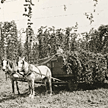 view large image |
9. E. Clemens Horst
hop field [between 1900 and 1920] View of mule-drawn hop wagon, filled with hop vines at the edge of Horst's hop field in Wheatland. |
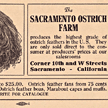 view large image |
10. Ostrich farm ad [unknown] Advertisement for the Sacramento Ostrich Farm. |
|
|
INSTRUCTIONS 2. Read Background Article 12. You may wish to read it to your students or print it and have them read it by themselves. Discuss any questions that they may have. 3. Documents 1 and 2, Pamphlets for Yolo and Sacramento Counties. Ask students to list crops and livestock that are raised in California. These documents may then be used for small group activities. Have students read through the documents and look at the pictures. They may need help in understanding some of the flowery vocabulary used, so you may want to read and discuss specific pages with them. Have each group make a chart for the booklet they studied, listing the livestock raised and the crops mentioned. Can they identify any changes in the counties and in agriculture since the booklets were published? 4. Document 3, A wheat field. Ask students to guess the crop. Relate the image to those of the Natomas reclamation project in Lesson 11. Have students list foods that include wheat. Discuss the importance of wheat in California agriculture. 5. Document 4, Field of beans. Ask the students to guess what crop is shown. Discuss the meaning of the term row crops and ask students to name other plants that are grown in rows. Some students may have had experience growing row crops in a garden. Discuss the tasks involved in growing and harvesting such crops. 6. Document 5, Peach harvest. Have students identify other fruits that are grown in California. 7. Document 6, Summit Pears crate label. Tell students that the Blue Anchor logo means that the grower belonged to the California Fruit Exchange. Discuss the benefits of collaborative marketing organizations such as the Exchange. 8. Document 7, Almond harvest history. This document illustrates how almonds were harvested before the introduction of mechanical equipment. You may want to print several of the documents for children to review in small groups. Find out how almonds are harvested today and discuss what has changed. If you have access to almonds in the hull, bring some of them into the classroom for children to see. 9. Document 8, Almond advertising. The historical collection of the California Almond Growers Exchange is stored in the Sacramento Archives and Museum Collection Center, which has included many of these documents in the Sacramento History Online Collection. This cutout is one example of a collaborative marketing effort for the Blue Diamond brand. Ask students how they think it might have been used. (possibly as a store or fair display) 10. Document 9, E. Clemens Horst hop field. Hops is an unusual crop with which many children might not be familiar, but it was once an important agricultural product in California. You can see a very early film of the Horst Hops Ranch on this site. To download and play the film clips, you must have a current QuickTime Player (6.0 or higher). 11. Document 10, Ostrich farm ad. How many children have seen a real ostrich? Where? If possible, bring an ostrich feather to class to show children. Have they seen other unusual animals on farms in California? (llamas, buffalo, etc.) 12. Give students the following activity sheet Activity Sheet 12: California Crops (printed from the PDF file). After they have finished the activity, discuss their answers as a group. FOLLOW-UP 2. Document 1, The Yolo County pamphlet mentions that land could be purchased for six to 125 dollars per acre. Find out how much 20 acres of land would cost today and compare the two prices. 3. Draw an ad for an agricultural product that could be used in a store display. REFERENCES AND RESOURCES 2003 Teacher resource guide: A guide to educational materials about agriculture. Coats, L. J. The almond orchard. New York: Kelley, R. L. Gold vs. grain: The hydraulic mining controversy Jelinek, L.J. Harvest empire: A history of California
agriculture. Schlebecker, J.T. Whereby we thrive: A history of
American farming, 1607-1972. Selling the Gold: The history of Sunkist and Pure Gold. Stanford, CA: Stanford RELATED LINKS Almond
California Asparagus Commission
California State Historical Landmarks for Yuba County History of Almonds from Blue Diamond Growers History of Blue Diamond Growers
Oranges for Health--California for Wealth Ostrich entry in World Almanac for Kids
sacbee: Our Century Sunkist Growers |
| Sacramento History Online © 2003 - 2004 | |